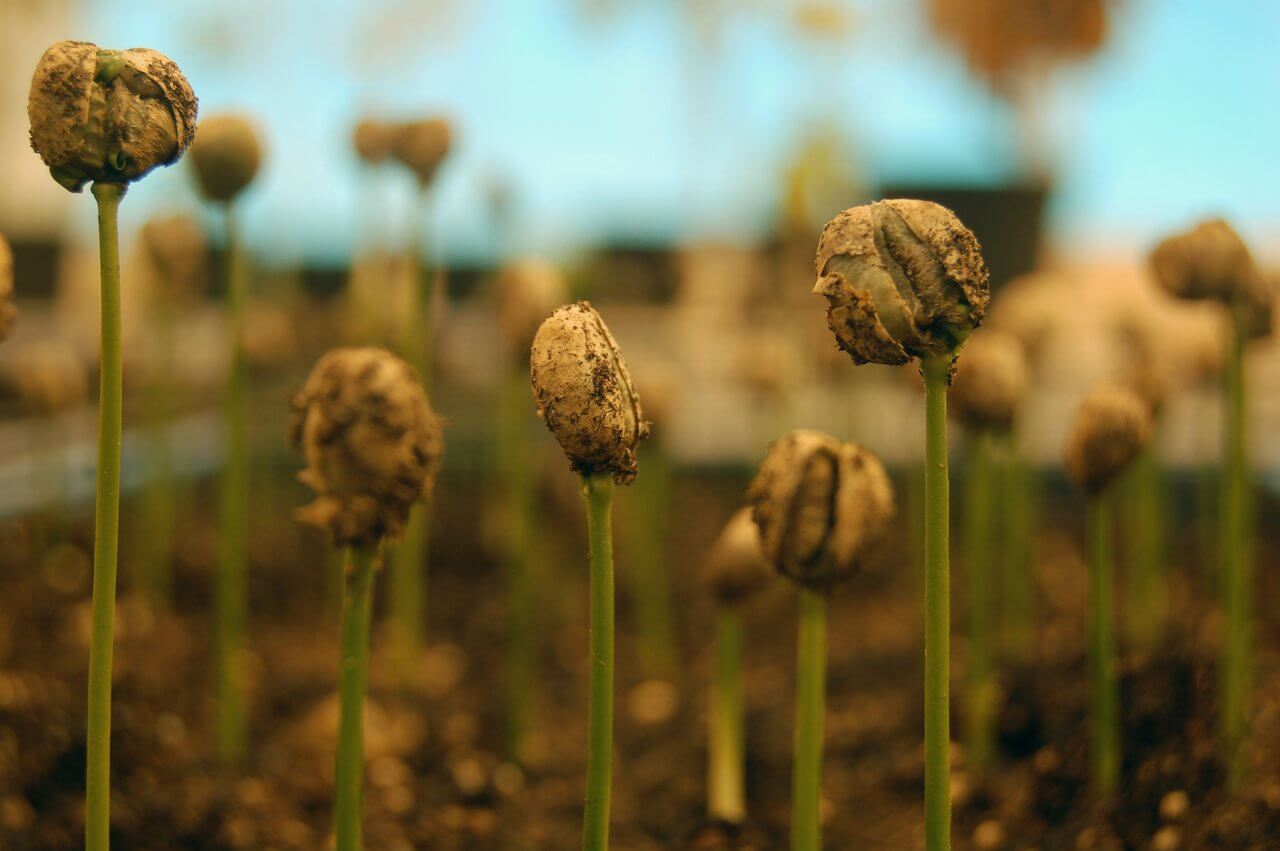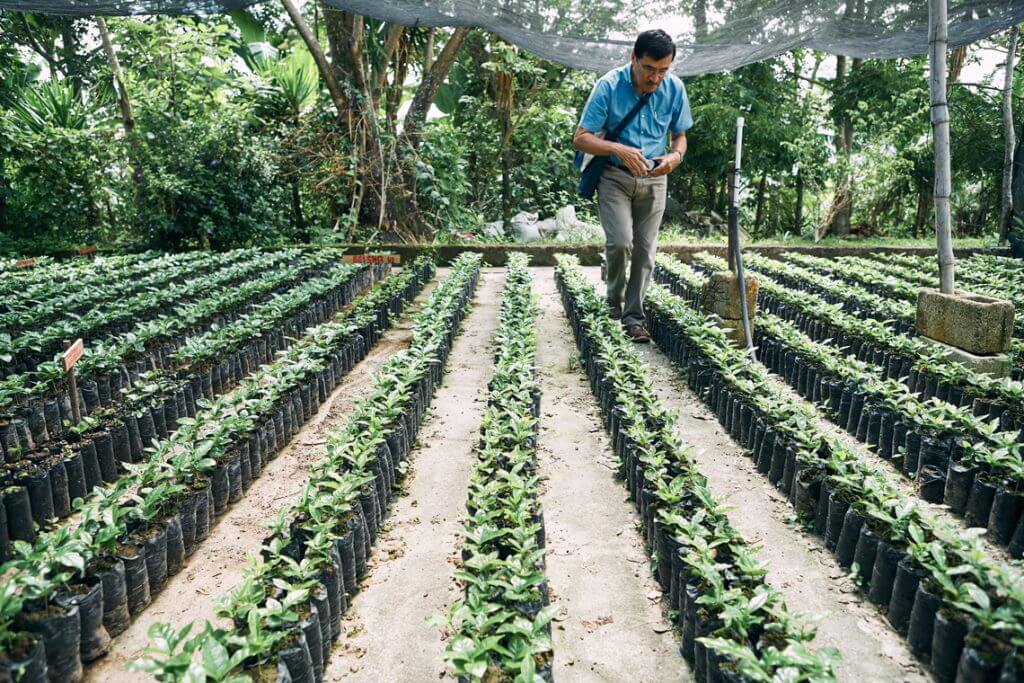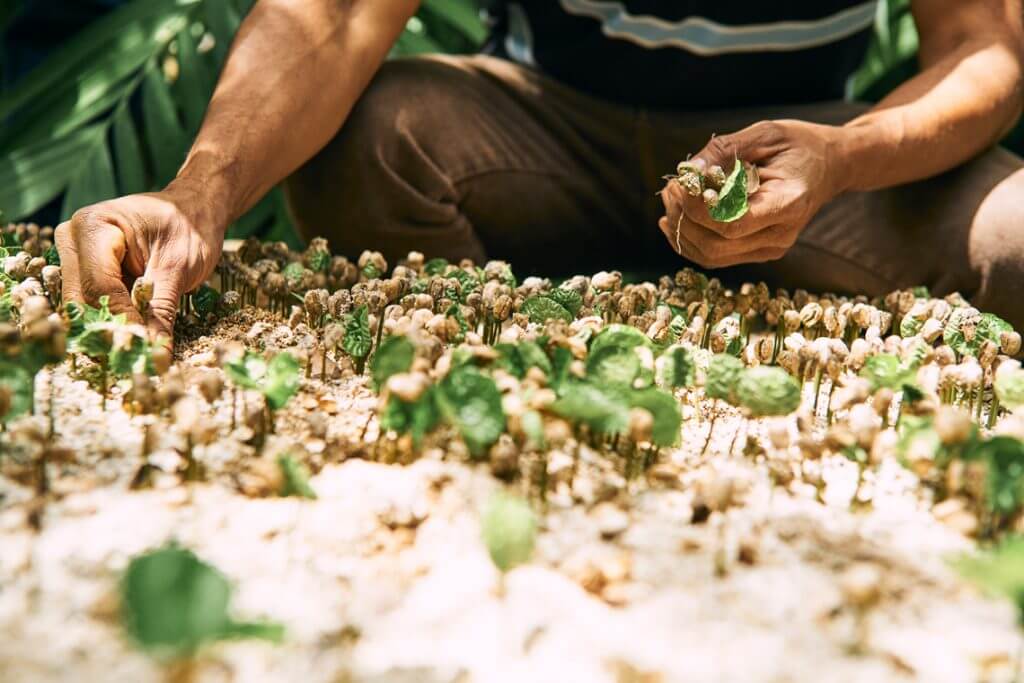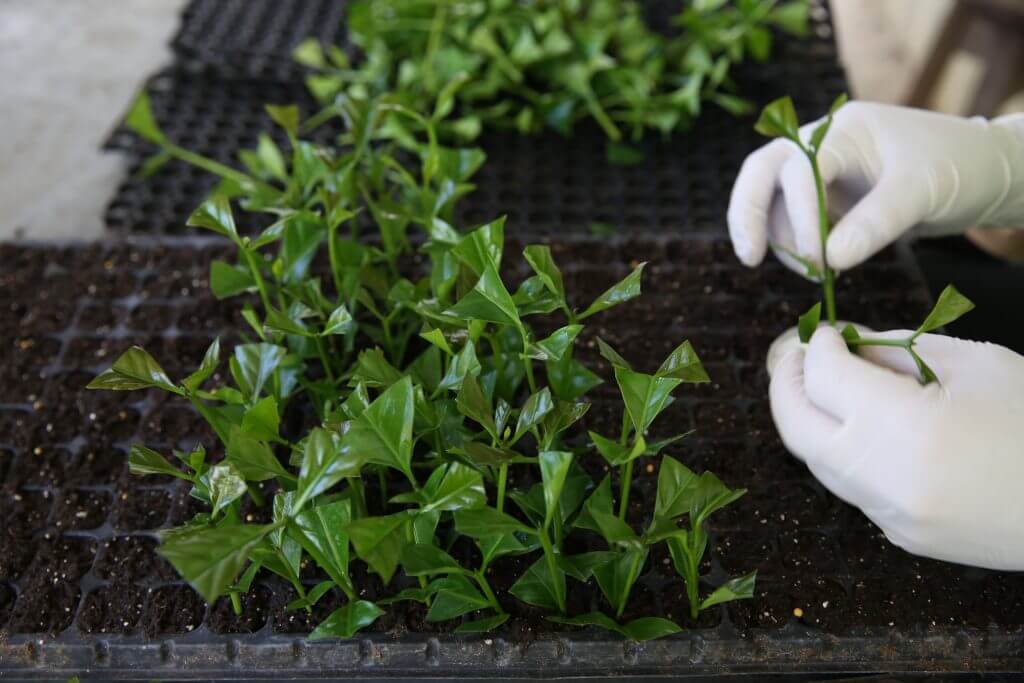World Coffee Research
The future of coffee

With the last couple of months still overwhelming and preoccupying the mind, it can be extremely tempting to turn a blind eye to the alarming stories being reported from coffee producing countries of the damaging impact climate change is already having on coffee production around the world.
Altered rainfall patterns, droughts, lower crop yields and increased numbers of pests and diseases are all pointing to fact that climate change is no longer something to prepare for in the future, we are entering a critical time right now, with very real and significant adverse effects in the short term.
We recently sat down with Hanna Neuschwander, Strategy & Communications Director for World Coffee Research, to learn a little more about the organisation that is on a mission to safeguard the future of coffee through collaborative scientific research and development.
For those new to WCR, can you tell us a little bit about the organisation and the mission you are on?
World Coffee Research was created by the global coffee industry in 2012 in recognition of the need to accelerate innovation in coffee agriculture. WCR enables coffee roasters and other coffee businesses to invest in precompetitive, advanced agricultural R&D to transform the coffee sector to be productive for industry, profitable for coffee farmers, and sustainable for the world. We work on a global, precompetitive basis. Currently, 210 companies large and small from around the world support this work.
Consumers are gradually starting to hear the term ‘Agricultural R&D’ being used more often in the coffee industry but could you give a description of what this term means?
The coffee we drink today (like much of the food we eat) is the result of research that happened in the past – breeders creating new varieties for farmers to grow, agronomy researchers figuring out the optimal amount of nutrition that coffee trees need, or disease researchers learning about the life cycles of key pests so that they can be better managed on the farm. The coffee that our children will drink will be the result of research we do today.
Research is an essential basis for improving the ‘goodness’ of coffee – how good it tastes, how good it is for the planet, and how good it is for people who grow it. Of particular concern right now is the economic sustainability of coffee farming – whether farmers can make a good living from coffee.
Agricultural R&D is a foundational contributor to the economic sustainability of coffee farming; farmers who have access to agricultural innovations like improved varieties are much more likely to be profitable from their farming.
What is the multi-location variety trail (MLVT)?
This is an unprecedented global trial testing the same 31 coffee varieties on 40 research stations in 22 countries. The purpose is twofold: To understand scientifically more about the nature of the genetics x environment interaction (i.e., how different varieties perform in different agro-ecological environments – as you can imagine, this is very relevant for climate change), as well as to give countries access to observe up close varieties that they previous have not had access to see.
In most countries, there are only a handful of varieties that farmers commonly grow, and most have been around for decades – this trial allows countries to observe many varieties at once that are new to them (even if they may be common in other areas of the world) to see if any are promising. If some varieties do very well, those countries might seek to commercialise the varieties for farmers in their countries. Working with existing varieties in this way is one way to bring innovation to farmers on a faster timescale than breeding (which, for a tree crop like coffee can take 15-25 years).


Can you tell us a little bit about DNA fingerprinting and why it is important?
In the past, to tell one variety apart from another, all you had to go on was what it looked like. This is tricky for coffee. Many arabica varieties look very similar to one another, and most farmers (and even many countries) don’t have detailed records about the varieties they have. DNA fingerprinting is a shortcut that allows you to identify the variety based on its genetics – kind of like how researchers right now are able to track different strains of Covid19 that have moved around the world.
It matters because different varieties do different things – but if you don’t know what variety you have, how can you be sure you have the right varieties for the conditions on your farm? How can you be sure you are giving the trees what they need? Not knowing their varieties exposes farmers to unnecessary risk, when they already bear so much of it. Can you imagine a vinyard not knowing what kind of grape they grow? Or a tomato farmer not knowing what varieties he has? And this is just at the farm level. What about at a nursery? Or even worse, a seed lot (which supply nurseries with their seed)? In most coffee producing countries around the world, there are not professionalized systems for checking or ensuring the genetic purity of the seeds they are producing and that eventually make it into farmers fields. Many, many, many seed lots and nurseries are sending out plants into farmers fields that are not genetically pure, that are mislabeled, that are the incorrect vareity.
We don’t hesitate to use the word ‘crisis’ to describe the state of most of these systems. Having cheap, rapid methods to test genetic purity can totally change that situation and help first seed lots, and then nurseries – and eventually individual farmers, and even roasters – be assured of what they have.
Can you provide an introduction as to what F1 hybrids are?
A new group of varieties created by crossing genetically distinct Ara-bica parents and using the first-generation offspring. There are only a handful of F1 hybrid coffee varieties in the world, all developed in the last 10 years, and only recently commercially available to farmers.
In coffee as in other crops, F1 hybrids have the potential to combine traits that matter most to farmers – higher yields and disease resistance – with the trait that matters most to consumers – taste, a combination that has been difficult to attain in the past. F1 hybrids are notable because they tend to have significantly higher production than non-hybrids. Early trials of coffee F1 hybrids showed 22-47% higher yields, without losses in cup quality or disease resistance. Recent results show they maybe also be more robust in other ways, such as tolerant to frosts.
Hybrids hold great promise to revolutionize the coffee industry through genetic progress, the way they did for maize in the last century. But F1 hybrids are limited by a key constraint: Currently, they can only be produced by technically sophisticated nurseries, of which there are only a handful in the world. Therefore, although these varieties are ‘best in class’, few farmers have access to them.
Another critical issue with F1s is that seeds taken from F1 hybrid plants will not have the same characteristics as the parent plants. This is called ‘segregation’. It means that the child plant will not look or behave the same as the parent. For smallholder farmers who are used to saving their own seed, this is a challenge to communicate, but it’s critical because using F1s will pose a significant risk to them if they save the seed. It is critical for farmers to know that F1 hybrids should only be purchased from trusted nurseries.


What is the ‘sensory lexicon for coffee’ tool? And what does it hope to achieve?
The goal of the World Coffee Research Sensory Lexicon is to use for the first time the tools and technologies of sensory science to understand and name coffee’s primary sensory qualities, and to create a replicable way of measuring those qualities.
Just like a dictionary reflects broad, expert agreement about the words that make up a given language, the lexicon contains the tastes, aromas, and textures that exist in coffee as determined by sensory experts and coffee industry leaders.
Despite the fact that we have many good tools for evaluating coffee, such as rigorous cupping protocols, none of them is suitable for scientific inquiry. There are three things about the lexicon that are fundamentally different from other sensory evaluation tools:
1. It is descriptive. The World Coffee Research Sensory Lexicon doesn’t have categories for “good” and “bad” attributes, nor does it allow for ranking coffee quality. It is purely a descriptive tool, which allows you to say with a high degree of confidence that a coffee tastes or smells like X, Y, or Z.
2. It is quantifiable. The World Coffee Research Sensory Lexicon allows us not only to say that, for example, a given coffee has blueberry in its flavour or aroma, but that it has blueberry at an intensity of on a 15-point scale. This allows us to compare differences among coffees with a significantly higher degree of precision.
3. It is replicable. When the World Coffee Research Sensory Lexicon is used properly by trained sensory professionals the same coffee evaluated by two different people – no matter where they are, what their prior taste experiences is, what culture they originate from, or any other difference among them – will achieve the same intensity score for each attribute. An evaluator in Texas will get “blueberry, flavour: 4” just the same as one in Bangalore.
These three factors allow us to ask and answer scientific questions, like how a given factor X (coffee variety, farm management practice, brewing method, etc.) impacts the flavour of a coffee. Controlling for as many factors other than the X factor as possible, we can submit the coffee samples for evaluation to a group of sensory scientists who have been trained in the use of the lexicon. They can assess the samples, and then analyse what the sensory assessment tells us about the research question.
Sensory scientists always work in groups, called panels, to make sure that no one taster skews the results. A typical panel has 5 to 7 tasters, who train for six to nine months to achieve calibration with the lexicon and with each other before they begin evaluating samples. Sensory lexicons are not unique to coffee. They have existed for many years and exist for many products that are probably familiar (beer, wine, honey, cheese) and some that are not (cat litter!?).
What are you most excited about working on with WCR in the next year?
In March of this year, we hired a new research director, George Kotch. He comes with decades of experience in running highly effective breeding programs for other crops. With George at the helm, we will be shifting to a “demand-led” breeding approach – working to extensively define what qualities and traits matter most to the end users of varieties – farmers and coffee buyers, and then working through a backward design process to target those traits in the development of new varieties. We will be bringing that approach to key countries to help them modernise their breeding programs to be truly responsive to the needs of those using coffee (both in the filed and in roasting drums).
What can us coffee drinkers do to help?
Care about and commend the companies that are doing hard work to support collaborative efforts to make coffee better for farmers and for the future!
You can read more about World Coffee Research on their website here.
Blossom Coffee Roasters is a proud member of WCR’s checkoff program, meaning that for every kilo of coffee we buy we make a small donation towards supporting their pioneering work.
